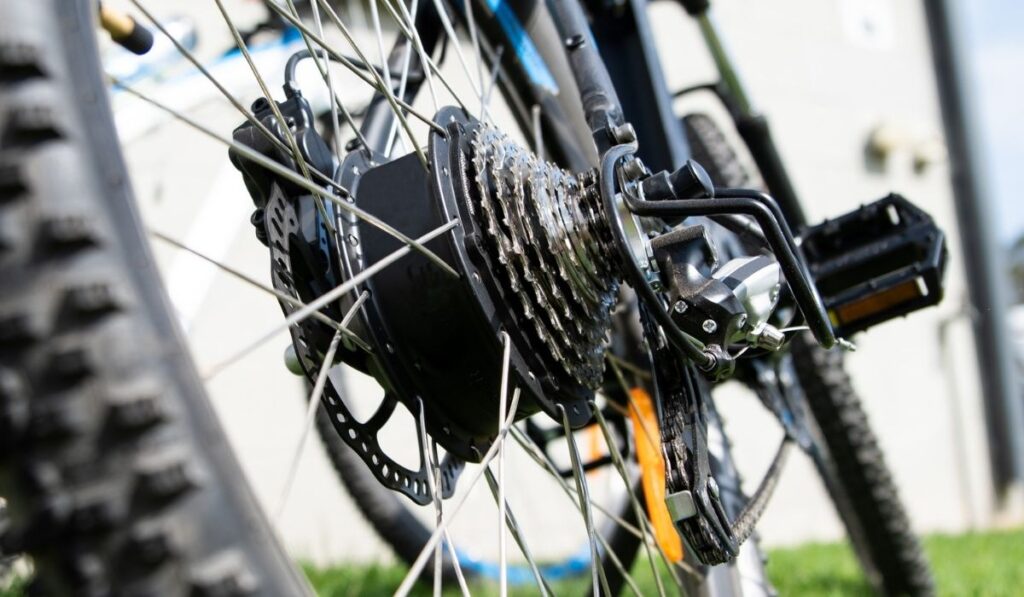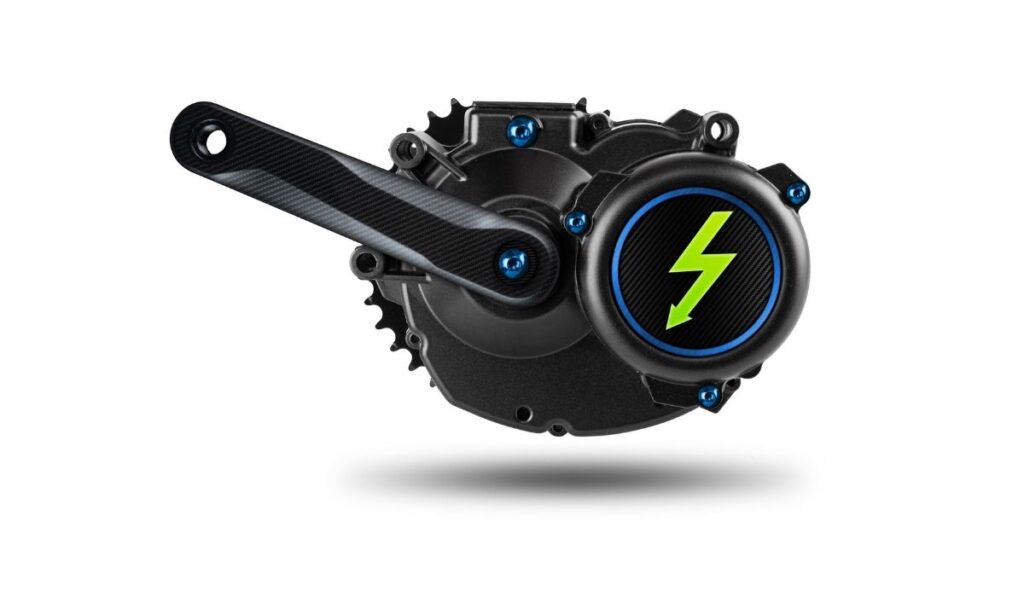Electric bikes can be incredibly appealing due to their inherent DIY compatibility. Some riders are drawn to all the different parts, options, and customizability. So, can you replace an e-bike motor yourself?
You can replace an e-bike motor yourself, and the difficulty will depend on the motor, model, manufacturer, and your technical skill level. Typically, hub motors are easier to install than mid-drive motors. Other motor types are DIY-able if you’d like to install the motor yourself.
Replacing a motor on your e-bike or installing one can be incredibly satisfying. This process can either be a nightmare or a weekend in paradise. So, what exactly do you need to know about doing it, if you decide to take on the challenge? Read on for all the information you need when it comes to replacing an electric bike motor!
How Hard is it to Replace an Electric Bike Motor?

Replacing an e-bike motor is going to range in difficulty depending on the motor type, model, manufacturer, and your skill level.
Depending on your skill level, replacing an e-bike motor could be a day project or a weeklong nightmare. If you aren’t mechanically inclined, DIY options like conversion kits may not appeal to you.
Another thing that will determine the difficulty and compatibility is going to be the model and manufacturer of your e-bike. Some models are going to be optimized for customization. Your bike manufacturer may even have a motor, battery, and controller upgrade you can purchase. Other brands and styles of bikes are going to be more challenging or unable to have the motor replaced.
The last thing will be what type of motor you are going to be replacing. Different motors are going to take different levels of skill, maintenance, and care. So, what can you expect from the different types of motors?
What are the Different Types of E-Bike Motors?
With current electric bike technology, you are going to come across three different motor types. These motor types are mid-drive motors, direct-drive hub motors, and geared hub motors. You may come across other options, but these are the most common ones.
We have a related article explaining how you can upgrade the motor in your bike, and how doing so can offer a longer range and a lighter overall package, so be sure to check that out if you’re interested in replacing your motor as an upgrade (not just a replacement). For now, let’s dive into the different types of motors in use on electric bikes.
Mid-Drive Motors
Mid-drive motors are positioned at the bottom bracket of the bike between its pedals. Since the motor is placed underneath the rider, the bike has a more balanced feel while riding. These motors also allow you to have electric assistance through all your gears. All good things considered, these are however the most complicated type of motors to put together.
Direct-Drive Hub Motors
Hub motors get placed on either the front or rear wheel of e-bikes. Hub motors spin the wheel and propel you forward. Direct-drive motors are the simplest type of motor and are better suited for high-speed uses. That being said, direct-drive motors are commonly bulkier, require bigger batteries, and add weight to your e-bike.
Geared Hub Motors
The other type of hub motor is the geared hub motor. These motors are smaller than direct-drive hub motors and generate more torque, but less top-end speed comparatively. Both rear and front-hub motors can affect the bike handling and won’t climb hills as well as a mid-drive motor.
Some Motor Types are DIY-able

If you’re going with the DIY route, different motors are going to offer various installations. Front and rear-hub motors are going to take less mechanical skill than a mid-drive option.
A mid-drive motor will be a better option if you’re looking for depth from a motor and the installation process. For example, the BAFANG BBSHD (on Amazon) is a mid-drive motor kit that offers a lot of customization. Of course, with all motors, you’ll have to make sure they’re compatible with your bike, model, and other electrical components before installation.
However, all motor installations can provide a fair bit of depth and customization. For instance, you’ll need to choose whether to go with a throttle system or not. On top of that, you can test pedal-assist systems and decide which sensors you would like. Then, of course, you have considerations like the battery and the controller.
For example, take this kit by EBIKELING (on Amazon). It comes with both throttle and pedal-assist systems, so you can try both and see which you prefer. You can then decide if you want to go with a thumb throttle or twist throttle button. From there, you could upgrade the pedal-assist sensor, controller, battery, and even more. It all depends on your needs, goals, and preferences.
But, if you aren’t looking for a hefty installation, your best bet will be a hub motor. So, what are your options for hub-motor conversion kits?
E-Bike Kits that use Hub Motors
The most straightforward e-bike motors to install are going to be Hub Motors. To install hub motors kits, you simply replace the wheel of your bike. These motors and conversion kits are perfect for beginners.
For example, take a look at another conversion kit by EBIKELING (on Amazon). This kit is a front-hub motor and provides the same customizability of the throttle and pedal-assist options. This kit is relatively affordable compared to buying another e-bike off the shelf.
If you wanted a cheaper kit to dip your toes into, there are other options for under $300. Converting your traditional bicycle into an e-bike with a hub motor kit is incredibly simple and affordable. After you purchase the kit, you only need a battery. With different options online ranging in price, power, and quality, you can literally piece together a bike of your own. As long as the parts are compatible. All in all, you can convert a bicycle into an e-bike for under $500 in a single weekend.
